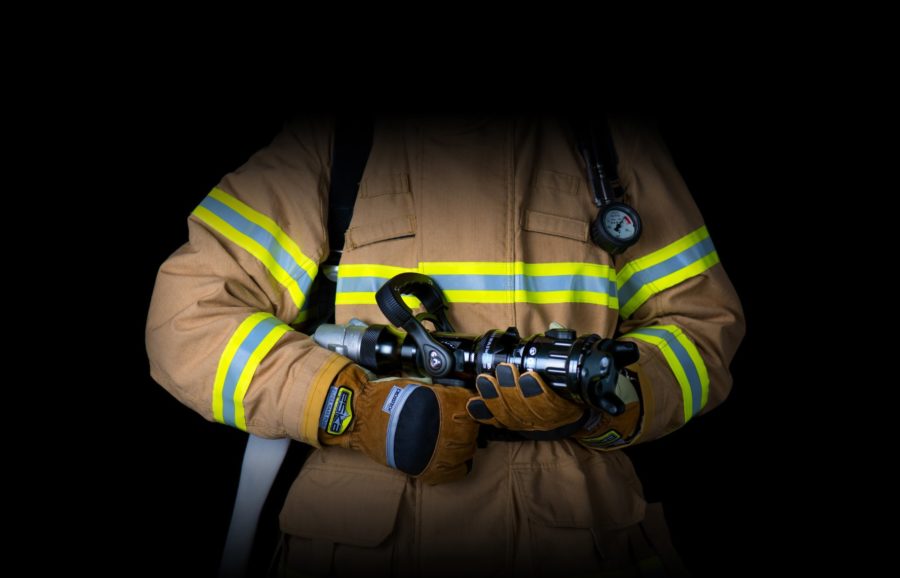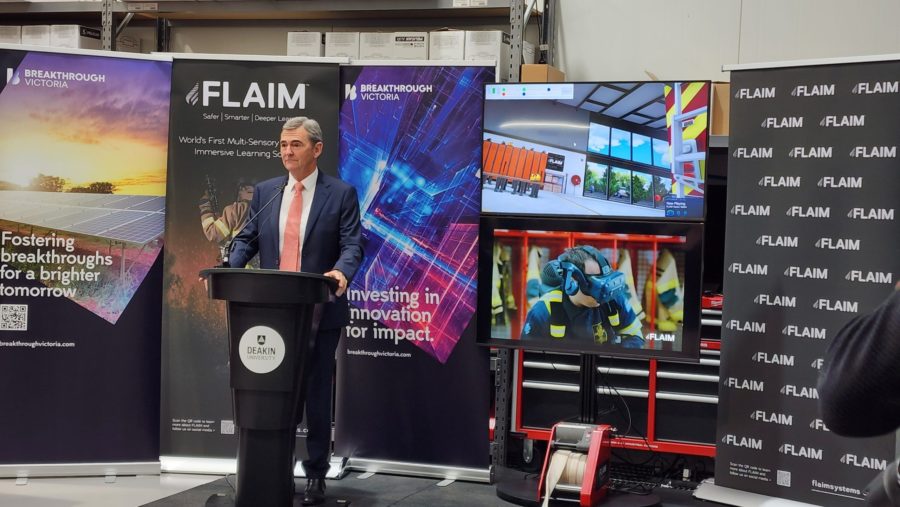
In Virtual Reality News
March 30, 2023 – FLAIM Systems, a provider of immersive learning solutions, has this week announced the successful completion of an AUD $6.7 million Series A capital raise, with the round led by cornerstone investor Breakthrough Victoria, an Australian investment company that manages the Victorian Government’s AUD $2 billion Breakthrough Victoria Fund.
FLAIM Systems stated that net proceeds of the AUD $6.7 million capital raise will be applied towards the development of the company’s technology stack, focusing on building an in-house learning development platform, strengthening its team across executive, technical, sales, marketing and customer experience roles, and working capital to support scale-up and fund a shift from capital sales to subscription sales.
FLAIM Systems has developed a fully immersive virtual reality (VR) firefighter training system. The company’s ‘FLAIM Trainer’ delivers a safe and cost-effective way to replicate the stress and uncertainty of real-world situations to better prepare the firefighter community to respond. It combines a VR headset with haptic technology, which creates a kinaesthetic “feels-real” experience by applying force feedback to the user. This includes simulating an operational fire hose and a thermal vest that reproduces the heat firefighters experience in different scenarios from the direction of the fire.
The FLAIM Trainer tracks performance data in real time against training outcomes. This includes task completion time, air and water usage, stress levels, where the trainee is moving and looking within the scenario, how they position themselves and interact with virtual objects in the scenario such as gas meters, electrical boxes, or the fire itself.
As FLAIM’s training is virtual, there is no carcinogen exposure to firefighters or instructors. Plus 2,000 hours of annual training in one system can save the equivalent of 20 million liters of water and 27 tonnes of carbon emissions, according to the company.

From bushfires in remote locations to fires on aircraft, industrial sites and residential properties in urban areas – FLAIM Systems has developed 80 different VR training scenarios that allow firefighters to train across different situations. The company noted that it is already working with over 300 emergency services agencies, defense and higher education organizations and private enterprises in 45 countries, with the primary focus on scaling opportunities in Australia, the USA and UK.
Existing seed investors that also supported the financing round included major shareholder Deakin University, Significant Capital Ventures and FLAIM Systems staff investing their own after-tax cash, including Chief Executive Officer Simon Miller who has personally invested AUD $1 million since commencing as a FLAIM Systems seed investor in 2019.
Commenting on the funding, Miller stated: “This investment will provide FLAIM with the foundations for global expansion as we focus on addressing opportunities to provide safer, smarter, deeper learning solutions to high-risk and emergency situation training programs in the US and UK as well as Australia.”
With more than 10 million professional and volunteer firefighters around the world, the company’s technology offers the potential to make training safer for firefighters and the environment on a global scale.
Miller added, “With the annual cost of firefighter injuries estimated by the U.S. Fire Administration at between USD $1.6 billion and USD $5.9 billion in the U.S. alone, and 14% of all injuries incurred during training, we see significant scope to commercialize FLAIM’s innovative Australian technology as we seek to protect the lives of those who respond to hazardous fire, safety, rescue and emergency situations.”
For more information on FLAIM Systems and its VR firefighter training technology, please visit the company’s website.
Image credit: FLAIM Systems
About the author
Sam is the Founder and Managing Editor of Auganix. With a background in research and report writing, he has been covering XR industry news for the past seven years.
